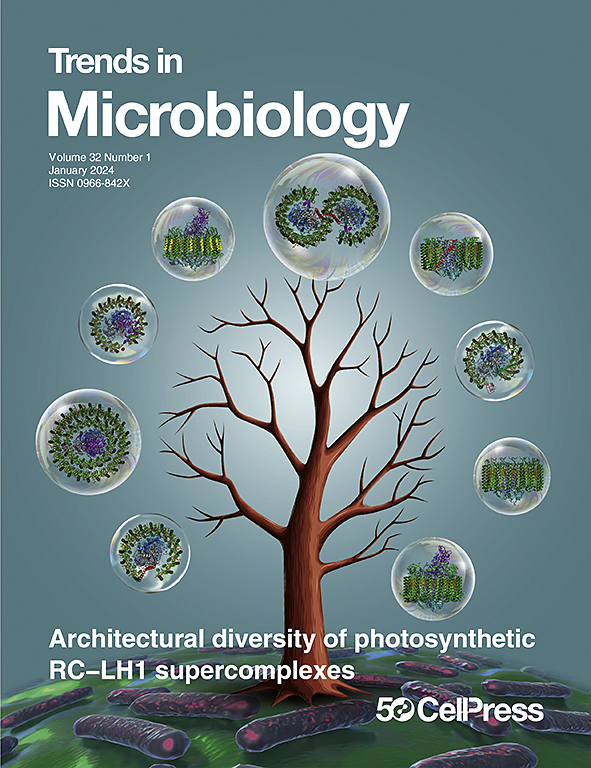快速噬菌体通过消耗宿主资源来竞争。
IF 14
1区 生物学
Q1 BIOCHEMISTRY & MOLECULAR BIOLOGY
引用次数: 0
摘要
在自然界中,噬菌体经常同时感染细菌,导致物种间竞争。此外,噬菌体治疗通常涉及使用不同物种的鸡尾酒来规避细菌耐药性。b本文章由计算机程序翻译,如有差异,请以英文原文为准。
Fast phages outcompete by depleting host resources.
In nature, phages frequently coinfect bacteria, leading to inter-species competition. Furthermore, phage therapy often involves using a cocktail of different species to circumvent bacterial resistance. Bürkle et al. investigated the competition dynamics between two virulent phages, demonstrating that faster assembly can allow a phage to dominate over its competitor.
求助全文
通过发布文献求助,成功后即可免费获取论文全文。
去求助
来源期刊

Trends in Microbiology
生物-生化与分子生物学
CiteScore
25.30
自引率
0.60%
发文量
193
审稿时长
6-12 weeks
期刊介绍:
Trends in Microbiology serves as a comprehensive, multidisciplinary forum for discussing various aspects of microbiology, spanning cell biology, immunology, genetics, evolution, virology, bacteriology, protozoology, and mycology. In the rapidly evolving field of microbiology, technological advancements, especially in genome sequencing, impact prokaryote biology from pathogens to extremophiles, influencing developments in drugs, vaccines, and industrial enzyme research.
 求助内容:
求助内容: 应助结果提醒方式:
应助结果提醒方式:


